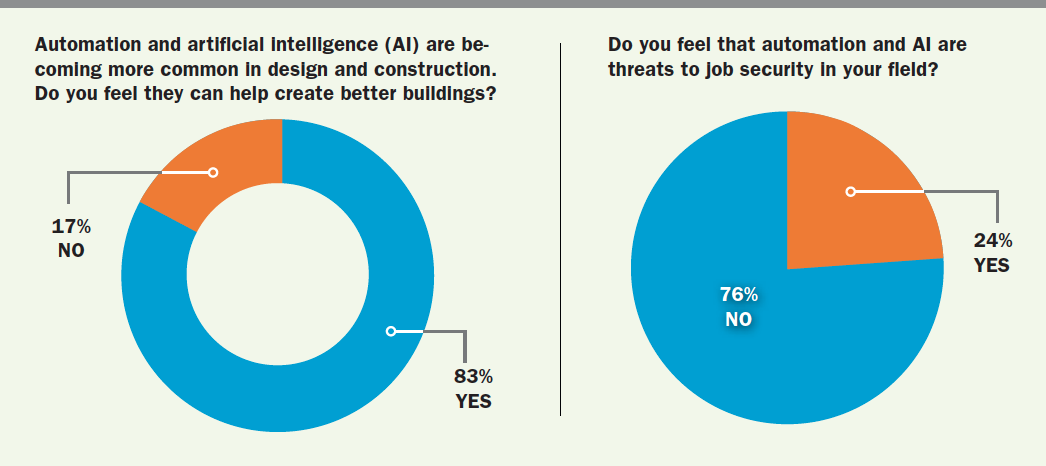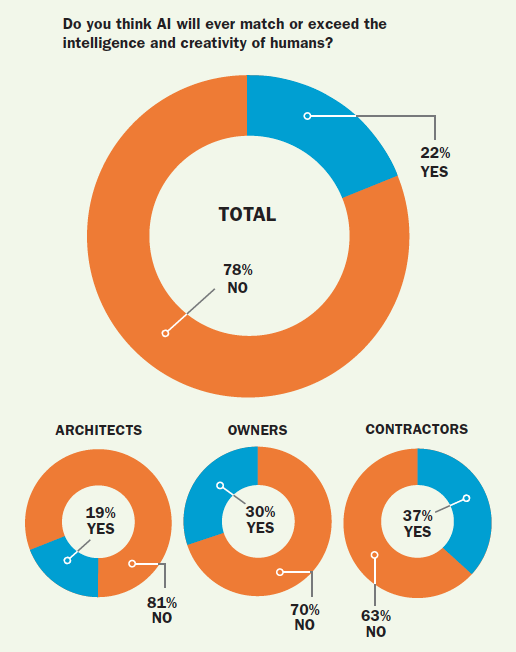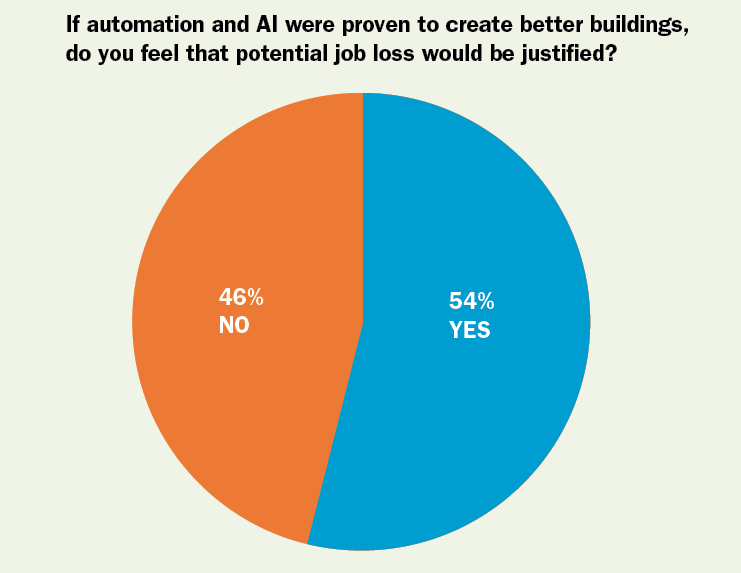In 2013, Chieh Huang and others launched Boxed, an online wholesale retailer that quickly grew to over $100 million in annual sales—largely through automation. Last year, for example, it roboticized its entire fulfillment center in New Jersey. As the new system was being installed, one line worker asked Huang, “Are you still going to need me when that thing goes live?” The company managed to redeploy everyone and not lose a single staffer. “Automation is great for profits,” Huang told Fortune, “but it’s a real potential trouble area for society.”
The numbers back this up. Forbes estimates that automation can improve productivity by 25-38% and save larger companies millions every year. At the same time, according a recent report from the McKinsey Global Institute, a third of the U.S. workforce and 800 million jobs worldwide could be replaced by 2030. Half of all work-related activities today are potentially automatable. At first blush, these stats suggest that automation is good for companies, but bad for jobs. Yet, the McKinsey report quotes a 1960s Federal commission: “Technology destroys jobs, but not work.” Yes, some Boxed employees lost their previous jobs, but no one was out of work. Greater productivity and efficiency can create new opportunities while eliminating others, and these changes signal seismic shifts in every industry.
This column is the first in a monthly series in BD+C that will address how automation and artificial intelligence (AI) will alter the nature of design and construction industry. Over the past couple of decades, computerized processes have significantly aided architects and builders by improving workflow, but to date those processes have not become automated on a large scale. Experiments in automated design and robotic construction remain just that—experiments. But that’s about to change.
A 2013 Oxford University study estimated that onsite construction jobs are 88% likely to be replaced by robots within a decade or two. That’s nearly nine out of every 10 bricklayers, carpenters, and anyone who picks up a hammer or shovel. “There will come a day when no human labor is present on any construction site,” robotics expert A. Scott Howe told me a decade ago.
What about architects and engineers? The Oxford study calculates the probability of eliminating engineers as only 10-13%, while the loss of architects is less than 2% likely. Yet, technology guru Kevin Kelly isn’t so sure. “Robot replacement is just a matter of time,” he wrote in Wired in 2012. “It doesn’t matter if you are a doctor, lawyer, architect, reporter, or even programmer.”
We asked BD+C readers to weigh in, and our recent survey presents a fascinating snapshot of the industry’s excitement and anxiety about technology. The vast majority of respondents have a positive view, with 83% agreeing automation and AI can help create better buildings. Designers and builders vary only slightly, with 81% of designers and 89% of builders agreeing. When asked whether automation threatens job security, only 24% say “yes.” A quarter of contractors see any risk, even though the evidence suggests otherwise.
Over three-quarters (78%) of everyone polled say AI will never match human intelligence, but the variation between designers and contractors is nearly 20 points—81% of designers and 63% of contractors. Meanwhile, AI experts such as Google’s Ray Kurzweil insist that computers will meet or exceed human intelligence by the middle of this century.

The question about which readers seem most ambivalent is whether automation’s ability to create better structures justifies job loss in the industry. A slight majority (54%) answered affirmatively: 52% of designers and 58% of contractors. So designers are almost perfectly divided on this question: they are convinced AI can improve architecture, but they aren’t threatened by this fact, and they are torn about whether the improvements justify fewer jobs.
In the coming months, we will unpack all of this. How will automation advance the built environment, and how will it affect traditional practices and professions? And what are the aims of our industry: to create more opportunity for ourselves or to enhance communities?
Let us know your questions and views. We’re all ears. Contact me at https://lancehosey.com/contact/.
Lance Hosey, FAIA, LEED Fellow, is a Design Director with Gensler. His book, The Shape of Green: Aesthetics, Ecology, and Design, has been an Amazon #1 bestseller in the Sustainability & Green Design category.


Related Stories
AEC Tech Innovation | May 12, 2023
Meet Diverge, Hensel Phelps' new ConTech investment company
Thai Nguyen, Director of Innovation with Hensel Phelps, discusses the construction giant's new startup investment platform, Diverge.
AEC Tech | May 9, 2023
4 insights on building product manufacturers getting ‘smart’
Overall, half of building product manufacturers plan to invest in one or more areas of technology in the next three years.
Sustainability | May 1, 2023
Increased focus on sustainability is good for business and attracting employees
A recent study, 2023 State of Design & Make by software developer Autodesk, contains some interesting takeaways for the design and construction industry. Respondents to a survey of industry leaders from the architecture, engineering, construction, product design, manufacturing, and entertainment spheres strongly support the idea that improving their organization’s sustainability practices is good for business.
AEC Tech | May 1, 2023
Utilizing computer vision, AI technology for visual jobsite tasks
Burns & McDonnell breaks down three ways computer vision can effectively assist workers on the job site, from project progress to safety measures.
AEC Tech Innovation | Apr 27, 2023
Does your firm use ChatGPT?
Is your firm having success utilizing ChatGPT (or other AI chat tools) on your building projects or as part of your business operations? If so, we want to hear from you.
Design Innovation Report | Apr 19, 2023
HDR uses artificial intelligence tools to help design a vital health clinic in India
Architects from HDR worked pro bono with iKure, a technology-centric healthcare provider, to build a healthcare clinic in rural India.
Resiliency | Apr 18, 2023
AI-simulated hurricanes could aid in designing more resilient buildings
Researchers at the National Institute of Standards and Technology (NIST) have devised a new method of digitally simulating hurricanes in an effort to create more resilient buildings. A recent study asserts that the simulations can accurately represent the trajectory and wind speeds of a collection of actual storms.
3D Printing | Apr 11, 2023
University of Michigan’s DART Laboratory unveils Shell Wall—a concrete wall that’s lightweight and freeform 3D printed
The University of Michigan’s DART Laboratory has unveiled a new product called Shell Wall—which the organization describes as the first lightweight, freeform 3D printed and structurally reinforced concrete wall. The innovative product leverages DART Laboratory’s research and development on the use of 3D-printing technology to build structures that require less concrete.
Smart Buildings | Apr 7, 2023
Carnegie Mellon University's research on advanced building sensors provokes heated controversy
A research project to test next-generation building sensors at Carnegie Mellon University provoked intense debate over the privacy implications of widespread deployment of the devices in a new 90,000-sf building. The light-switch-size devices, capable of measuring 12 types of data including motion and sound, were mounted in more than 300 locations throughout the building.
Architects | Apr 6, 2023
New tool from Perkins&Will will make public health data more accessible to designers and architects
Called PRECEDE, the dashboard is an open-source tool developed by Perkins&Will that draws on federal data to identify and assess community health priorities within the U.S. by location. The firm was recently awarded a $30,000 ASID Foundation Grant to enhance the tool.

















